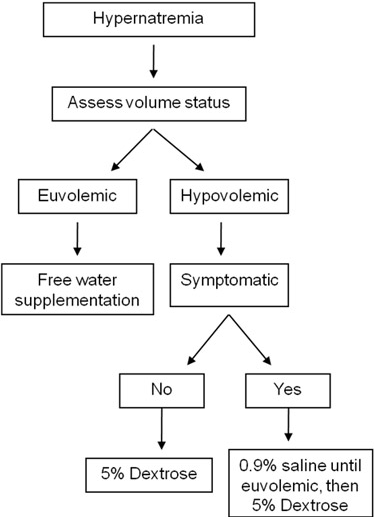hypernatremia
- related: Nephrology, hyponatremia
- tags: #nephrology

Hypotonic fluid loss usually activates the thirst mechanism to increase one's water consumption and prevent the development of hypernatremia, provided that the ongoing fluid loss has stopped. Most individuals that develop hypernatremia have neurologic deficits, so they either do not sense or cannot express thirst. Elderly or disabled individuals are often unable to access water.
The first step in treatment is to assess the volume status and treat symptomatic hypovolemic hypernatremia (as in this patient) with isotonic fluids (normal saline) to restore volume. Isotonic fluids are rarely used in hypernatremia except in patients with marked volume depletion and hemodynamic instability. Once the patient is euvolemic, the fluids can be switched to 5% dextrose for free water supplementation. The goal is to replenish fluids to decrease the serum sodium by 0.5 mEq/dL/hr without exceeding 12 mEq/dL/24 hours. Cerebral edema can occur if the sodium is corrected too quickly.